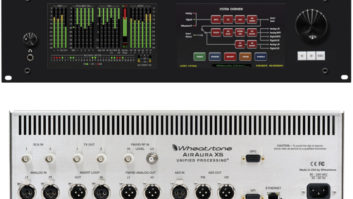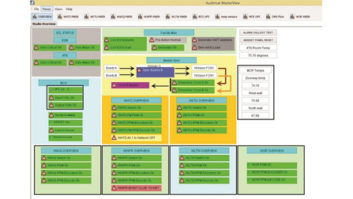Rick Sewell is Chicago engineering manager for Crawford Broadcasting.
There’s been a lot of discussion over the past year about the resiliency of PPM encoding. If you had a meter with trending topics on radio broadcasting websites, it would certainly be near the top. From the PPM encoder, through the station’s processing and transmitter equipment, out to the listener’s receiver where it finally reaches the PPM meter, there is obvious trepidation by engineers, programming, sales, management and owners about the ability of the system to accurately represent a station’s audience.
We have a situation in our local facility that has certainly allowed a little doubt to creep in for me. We PPM encode our Internet streams. Since we don’t have a computer constantly monitoring the streams, the decision was made to put the PPM monitor directly in line after the PPM encoder then into the streaming encoder. So there is nothing between the PPM encoder and the PPM monitor. You would think that this would be an ideal situation for the Monitor, and you would never have a red light as long as you had audio running.
However, this is not the case. We regularly get the red light on the monitor of all four of our streams. One solution was to put audio processors inline feeding the PPM encoders. This certainly helped, but we still see times where we get the red lights. If the PPM encoding has trouble making it through in what would seem to be an ideal situation, how is it working in the not-so-ideal real world?
When there is so much at stake, such as the very competitive PPM-rated market our local cluster is part of, every station is looking for every advantage it can get. Just one PPM meter registering a station’s encoding can not only make a big difference in ratings but the station’s bottom line as well. When you have meters ending up in very noisy environments, no wonder there was an eager market for a device that promises to enhance the PPM encoding for a station.
This is where the Voltair came in. It’s been about a year since stations have begun to implement the Voltair in their air chains. The promise of better ratings by simply inserting a device into your air chain is something that is hard to resist for most programming personnel in a competitive situation. Our programming staffs work very hard and sweat a lot of details, from how long the jocks talk, to “Will this song keep more listeners tuned in than tune out?”
As engineers, we look at the scientific part of this. Does this masked audio actually make it to the PPM meter? Arbitron (now Nielsen Audio) provided us with a tool for checking with the PPM encoding monitor. Most of us by now are familiar with the glow of the little green light giving us confidence that we have PPM Encoding present on air. We do our best to avoid the blinking red light letting us know there is a problem somewhere along the line. After all, it’s been said many times in this competitive PPM environment, that “If you don’t have PPM encoding you might as well be off the air.” While no one would actually turn off a transmitter because they have a PPM issue, that phrase does sum up that the PPM encoding is just as important as our transmitters, STLs and other vital equipment.
I for one have always thought the PPM encoding monitors are a useful tool in a general way; however they don’t really give you the whole story. Most of us have our PPM monitors set up in the most ideal receiving and listening environments. They usually get their audio directly attached to expensive receivers which in turn are attached to expensive antennas. No wonder we have green lights. Good signals and no background noise to compete with the masked audio.
So, with the green light on the PPM monitor, the job for us engineering the station is done in regards to PPM. After all, you’re only as good as the tools you have on hand. I would like to see Nielsen provide engineering and programming better and more accurate tools for determining what is actually happening with our PPM encoding in the real world.
What I propose is not more hardware. The hardware is already in the hands of engineers and programmers. We use it every day. The smart phone with an app designed to decode PPM would greatly enhance our ability to determine whether we are getting our encoding out in the real world.
It would not have to be something elaborate or require a phone with an FM chip. It would actually be more accurate if it simply uses the phone’s microphone to pick up the audio along with the ambient noise present at that locale.
We could simply open the app, let it listen and then give us a green or red indication that it is able to decode PPM audio. It could be that simple. A call sign indication would be useful as well. It would go a long way in demonstrating that the present system is working or if it really needs to be improved.
Nielsen has announced that they are already taking steps to improve the “density” of the PPM encoding. It would be great if we have an app, like the one I proposed, that would allow us to do before and after comparisons in the actual field. It might give many of us some confidence that we don’t need to purchase some encoding enhancement device; that our encoding is doing just fine.
Read an update on this story by Rick Sewell. This commentary originally appeared in Crawford’s “Local Oscillator” newsletter.






